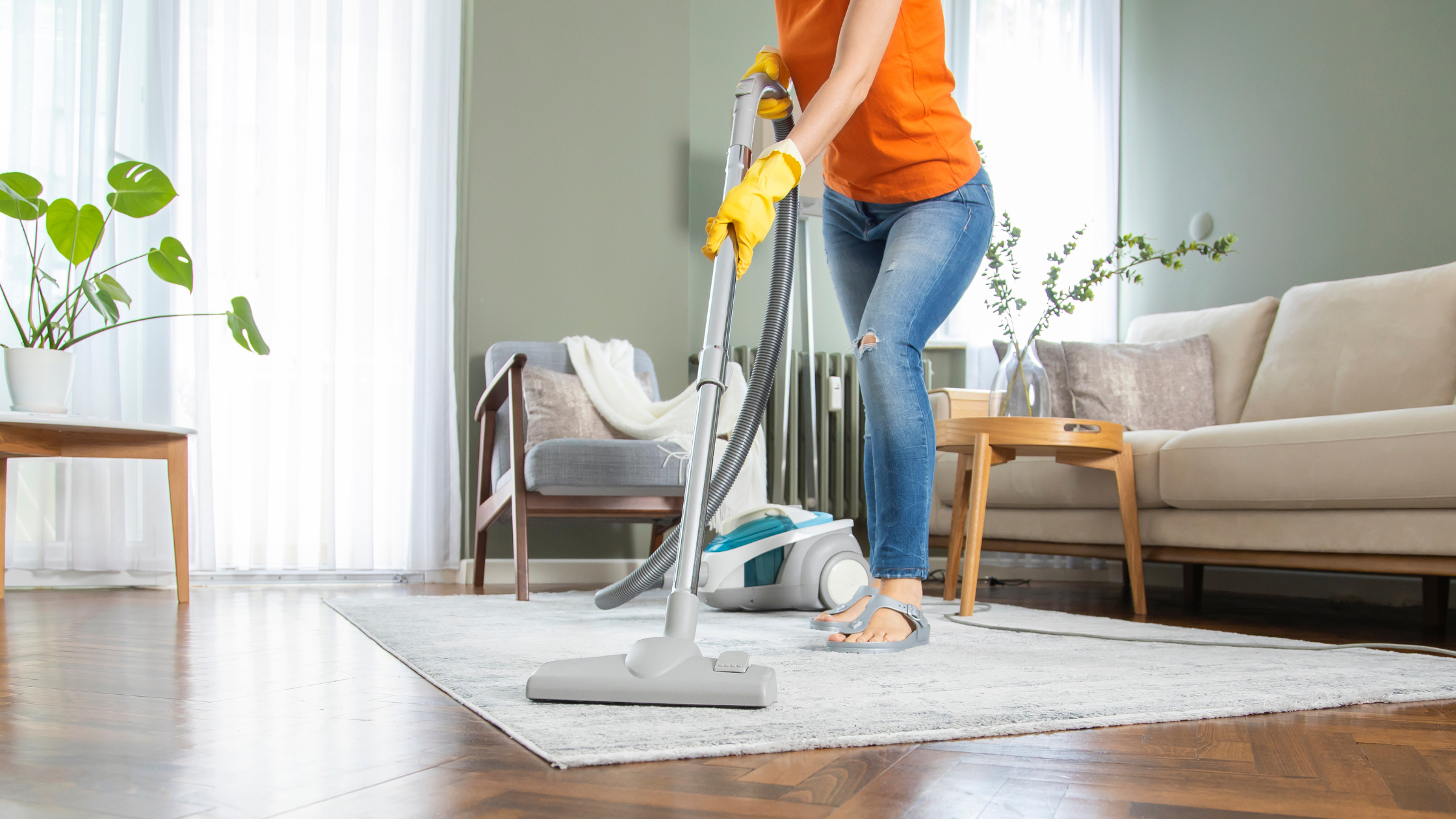Cleaning your home is a necessary part of life, but it doesn’t have to come at the cost of your physical well-being—especially your back. Whether it’s vacuuming, scrubbing, or picking up clutter, many daily chores can put unnecessary stress on your spine. In fact, back pain is one of the most common complaints among adults, and poor cleaning habits can easily exacerbate or even cause back issues over time.
The good news is that with a few adjustments to your technique, tools, and routines, you can keep your home tidy without sacrificing your back health. Here’s a guide to protecting your back while tackling everyday cleaning tasks.
Why Cleaning Can Be Hard on Your Back
Your back is made up of a complex structure of muscles, ligaments, discs, and bones that work together to support movement. Cleaning often requires bending, twisting, lifting, and prolonged standing—all of which can strain these structures if done improperly.
Some of the most common culprits include:
- Vacuuming and mopping, which involve repetitive bending and pushing.
- Reaching for high or low surfaces, which can compress the lower spine.
- Lifting heavy laundry baskets or boxes, which often involves poor lifting posture.
- Scrubbing bathrooms or tubs, which can mean kneeling or bending in awkward angles.
These repetitive motions and poor ergonomics can result in muscle fatigue, spinal misalignment, and in some cases, long-term injury.
How to Protect Your Back While Cleaning
1. Use the Right Tools
One of the easiest ways to protect your back is by choosing tools that do the hard work for you.
- Long-handled tools: Brooms, mops, and dusters with extendable handles prevent you from having to bend down or stretch awkwardly.
- Lightweight vacuum cleaners: Choose models that are ergonomic and easy to maneuver, ideally with a swivel head and adjustable height.
- Rolling laundry baskets: These help avoid lifting and carrying heavy loads across rooms.
- Sturdy step stools: Use these instead of stretching or standing on tiptoes when cleaning high places.
Using tools that reduce the need to bend or reach lessens the strain on your lower back significantly.
2. Focus on Your Posture
Maintaining good posture while cleaning is key to minimizing back strain.
- Keep your back straight when bending down. Instead of bending from the waist, squat down using your knees and hips, keeping your spine aligned.
- Engage your core muscles while lifting or bending. This stabilizes your spine and supports your back.
- Avoid twisting movements. When vacuuming or moving objects, pivot with your feet instead of twisting your torso.
- Balance your weight evenly on both feet when standing for long periods.
Being mindful of how you move and hold your body can make a big difference over time.
3. Break Tasks Into Smaller Chunks
Cleaning your entire home in one go can lead to overexertion and back fatigue.
- Break your cleaning into smaller, manageable sessions. For example, clean one room at a time or set a timer for 20-30 minute intervals.
- Alternate between light and heavy tasks. Vacuum one room, then switch to dusting or organizing.
- Take short breaks to stretch, hydrate, or walk around.
Pacing yourself helps prevent strain and gives your muscles time to recover during the process.
4. Lift Smart
Incorrect lifting techniques are one of the most common causes of back injuries during household chores.
Follow these steps to lift properly:
- Stand close to the object.
- Bend at your knees and hips—not your waist.
- Keep your back straight and your core engaged.
- Use your legs to lift, not your back.
- Hold objects close to your body.
- Avoid twisting your body while holding something heavy.
If an object is too heavy or awkward, ask for help or use assistive devices like a dolly or rolling cart.
5. Stretch Before and After Cleaning
Think of cleaning like a mild workout—your muscles need preparation and recovery time.
Before you start:
- Do a few gentle stretches, especially for your lower back, hamstrings, and shoulders.
- Take a brisk walk around the house to get blood flowing.
After cleaning:
- Stretch again to release tension.
- Try light yoga poses like Child’s Pose, Cat-Cow, or Downward Dog to decompress your spine.
Staying flexible helps prevent stiffness and reduces your risk of injury.
6. Use Supportive Footwear
Standing and moving on hard surfaces for extended periods can fatigue your back and legs.
- Wear supportive shoes with good arch support and cushioning.
- Avoid walking barefoot or in slippers on tile or hardwood if you’re cleaning for long durations.
- Consider anti-fatigue mats in areas where you stand often, like the kitchen sink or laundry area.
Proper footwear reduces pressure on your lower back and encourages better posture.
7. Adjust Your Cleaning Environment
Small tweaks to your cleaning space can reduce physical strain.
- Place frequently used items at waist height to reduce reaching or bending.
- Organize tools for easy access in a cleaning caddy or basket.
Rearrange furniture temporarily to allow easier access to areas that require attention.
The less you have to twist, reach, or overextend, the safer your movements will be.
When to Seek Help
If you experience sharp pain, persistent soreness, numbness, or tingling in your back while cleaning, stop immediately. These could be signs of a more serious issue like a slipped disc or nerve impingement.
Don’t hesitate to consult a healthcare professional:
- A physical therapist for posture correction and core strengthening exercises.
- A chiropractor if you suspect spinal misalignment.
- Your primary care provider for any pain that doesn’t improve with rest.
It’s always better to err on the side of caution when it comes to your spine.
Final Thoughts
Your back does a lot for you, so it’s only fair to return the favor by treating it well—especially during routine chores that can easily turn into strain-inducing activities. With a combination of the right tools, smart body mechanics, and a little bit of planning, you can make cleaning a safer and more comfortable task.
After all, a clean home should bring you peace—not pain.
Did you find these tips helpful? Share your favorite back-friendly cleaning habits or tools in the comments below! And if you know someone who’s constantly battling back pain during chores, send this blog post their way. A few small changes can go a long way in keeping the home—and the body—happy and healthy.


